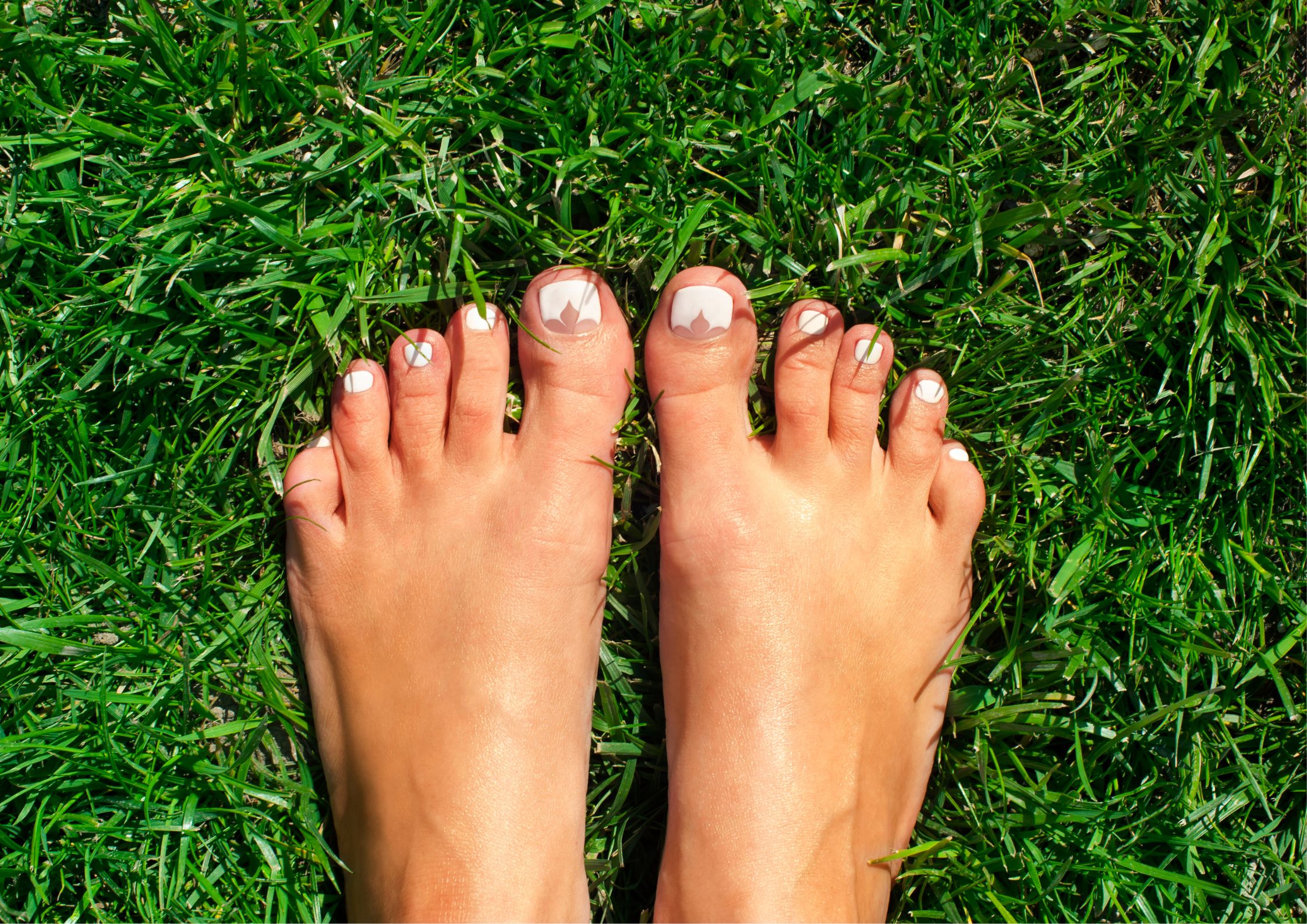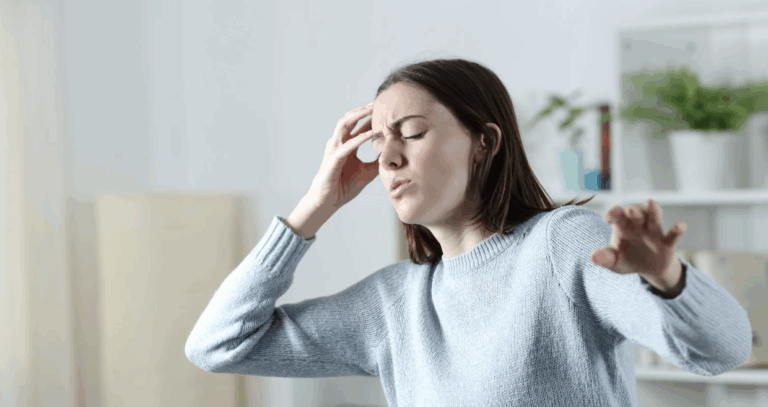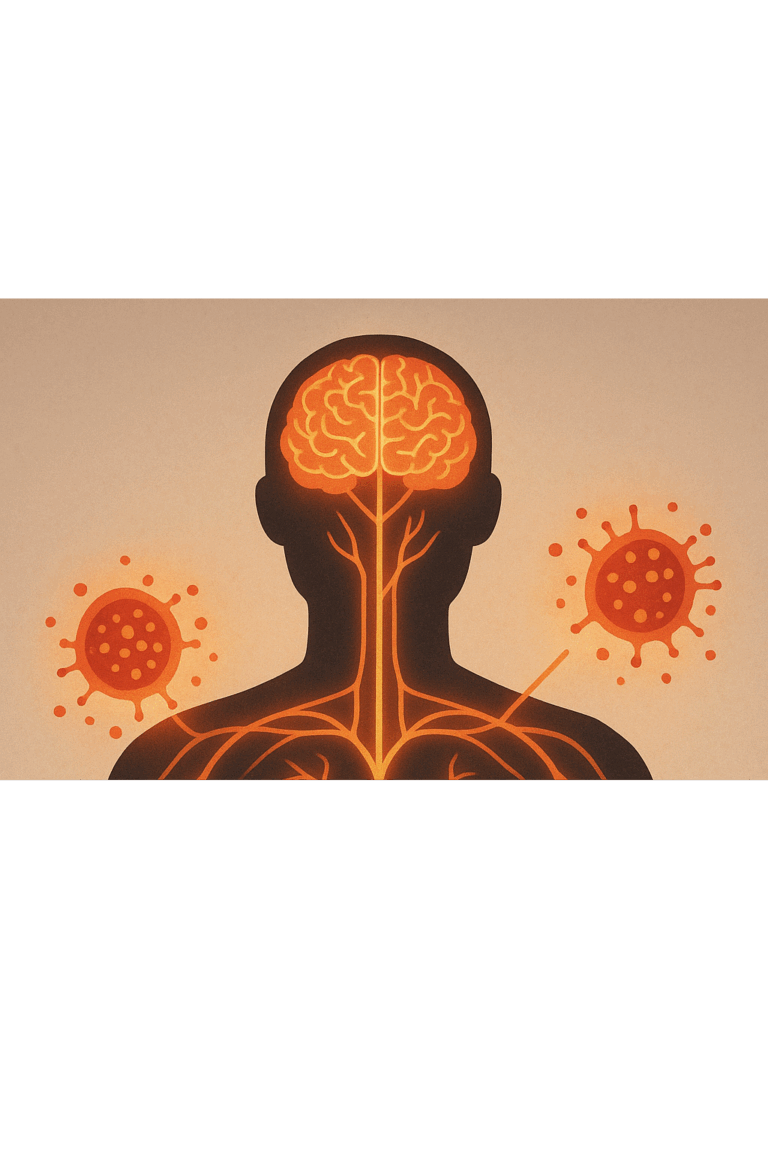- POTS and Exercise: The First Step Everyone Misses - 27 June 2025
- The Missing Link Between Breathlessness, Fatigue, and Chronic Pain: Understanding CO₂ Tolerance - 19 June 2025
- What is Mast Cell Activation Syndrome? - 12 May 2025
If you would prefer to listen to this article on Fibromyalgia and Grounding, please click below.
Every decade seems to come with its own fads, and one that seems to pop up regularly is the topic of grounding and fibromyalgia. The problem, however, is that most of the claims surrounding grounding, often known simply as earthing, massively overreach in terms of the evidence that supports them. The same was true for the core stability fad, the fascia fad, and the crystal fad (I really miss the 90’s).
I fully stand by anyone to continue doing absolutely anything that helps with chronic pain conditions like fibromyalgia. If something helps you to live a better life then 100% continue to do so, if it’s safe. Many people find that crystals help to ease their pain, despite no evidence that they do anything other than lighten your wallet. But, if some people do find that they help, then I say what’s the harm, if it helps you, then it helps you.
When it comes to fads, and in this case grounding, most of the time any benefits that they do seem to yield aren’t actually from the proposed mechanisms of the product or method, but more so from a complicated matrix that encompasses the complexities of both people and pain.
So, in this article, let’s have a look at grounding and fibromyalgia.
This article covers:
ToggleWhat is grounding?
Grounding (also known as earthing) is where you connect to the earth by barefoot contact with the ground or using conductive systems such as grounding mats or sheets. The concept is based on the idea that the earth has an abundant supply of electrons and connecting to it can help balance the positively charged ions in our bodies and reduce oxidative stress.
People who practice grounding believe that it can have an array of health benefits: reducing inflammation, reducing stress, improving sleep, and boosting immunity. Keep in mind though, to not confuse grounding/earthing in this context with grounding techniques found in the mental health world, which refer to it as “a technique that helps keep you in the present and helps reorient you to the here-and-now and to reality”.
The evidence behind grounding
I’m going to start by saying that I have no interest in grounding/earthing. I literally do not care if it does or doesn’t work through its claims: it literally makes zero difference to me. Which means I can be nice and relatively objective here.
Okay, let’s start with anecdotal evidence, it’s not very scientific, however, it’s a good starting point to see how people view it.
There is some anecdotal evidence from people who practice grounding, reporting that it’s the best thing since sliced bread. This also includes a very small group of people in the fibromyalgia and hypermobility communities. But, at first glance, it appears that more people report it makes no difference to them than having any effect.
Let’s look at the claims that many say about grounding.
- Improves sleep and energy levels
- Lowers stress and promotes calmness
- Increases production of melatonin and regulates biological rhythms
- Normalizes hormone levels and biological functions
- Improves mood and nervous system function
- Enhances immune system response to injury and trauma
- Regulates blood sugar and glucose levels
- Reduces inflammation and pain
- Supports adrenal health and protects from EMF effects
- Accelerates recovery from injury or athletic activity and reduces muscle damage
- It improves kidney function and regulates blood pressure and flow
- Neutralizes free radicals and prevents ageing effects
- Reduces some risk factors of cardiovascular disease and osteoporosis
- Regulates cortisol, the body’s primary stress hormone
- Relieves muscle tension, and headaches and reduces snoring
- Reduces PMS symptoms, hot flashes, and jet lag
- Improves regulation of blood flow in the torso, extremities, and face
- Prevents calcium and bone density loss
- Shifts the body from the stressed fight-or-flight mode to the restorative rest-and-digest mode
Some pretty bold claims there and unfortunately, after I tried to find it, not much in the way of hard evidence to support those claims. This is a shame really, as I don’t know about you, but a lot of those are on my to-do list.
Okay then, let’s take a look at the whole electron concept to see what’s actually going on with these claims. Firstly, the earth is generally considered to be electrically neutral, although there may be small imbalances that naturally self-correct. Just shuffle your feet along the floor and give touch your friend’s arm to see what I mean. This occurs because the Earth is exposed to the solar wind, containing both positively and negatively charged particles. If the Earth has a small positive or negative charge, it will attract particles of the opposite charge, restoring its neutrality. Therefore, the Earth’s charge is maintained in a state of balance, with only minor fluctuations, which kind of makes the theory around earthing, not make any real sense.
Additionally, the whole rationale of earthing/grounding and the electron viewpoint is completely nonsensical. The idea of “beneficial electrons from the Earth” in earthing is completely baseless and goes against our entire understanding of science. Electrons are indistinguishable, regardless of their origin – be it from the Earth, synthetic materials, or outer space. This is evident in the functioning of chemistry. The arrangement of electrons within atoms determines the composition of elements in the periodic table and their bonding properties. The Pauli Exclusion Principle states that no two electrons can occupy the same energy state, and this is due to the indistinguishability of electrons. If there were a difference between electrons from different sources, it would disrupt the basic principles of chemistry and result in inconsistent outcomes. The fact that we don’t observe these anomalies confirms that all electrons are indistinguishable.
Then we have the grounding equipment’s safety features, which call into question the validly of this whole entire concept. The grounding/earthing mats claim that they are safe from electric shock, due to the presence of a 100,000 Ω resistor in the cord, which connects the “Earthing” mats to your houses electrical ground system. This statement just doesn’t make any sense because a resistor resists the flow of current. The ground connection in an electrical system typically has a resistance of a few ohms, but the addition of the 100,000 Ω resistor increases the resistance by nearly 100,000 times, reducing the flow of electrons from the Earth by the same amount. To achieve the proposed health benefits of one second of direct contact with the ground, you would need to spend 100,000 seconds on the mat, which is equivalent to over 11 years, and I just don’t have the time for that! The fact that they advertise the resistor as a safety feature shows the lack of scientific validity in this entire concept.
So, if the actual theory around grounding doesn’t make sense, then the evidence is probably going to be really bad?
Well, this is a weird one, because it looks really good, at least until you really look at it.
The issue with the evidence for grounding
Now, if you do take a little gander at public access databases like PubMed, you will eventually come across only 2 or 3 pieces of research that promote the use of grounding: well, based on its claims (1). These studies at first glance look fairly reputable, however, I don’t really feel they are. They do contain some truths though, essentially cherry-picking previous studies and evidence conducted by ecopsychologists in order to lump grounding in with nature immersion therapy and the benefits to improved physical, mental, and emotional health that it brings.
There is, however, something very important to note about these very few studies; the same ones which are cited over and over again. Many “open access” journals charge authors to publish their study reports, leading to a low standard for publication and little to no peer review. This has resulted in the publication of questionable or flawed studies: also known as “junk science.”
These studies can be easily accessed through the PubMed Central database. However, it’s important to note that just because these studies are accessible through agencies, doesn’t mean they endorse or approve of them. The names of the government agencies such as NCBI, NLM, and NIH, are prominently displayed at the top of the studies, leading to a misleading perception that these studies are officially endorsed or supported. However, this is not accurate at all. These agencies are merely facilitating public access to the information. Likewise, of the studies I looked at, typically involve crazy small sample sizes and lack standard scientific controls. Most of these studies are not even published in any reputable scientific journals but in pay-to-publish journals. Additionally, you will also find that many of the authors who have conducted and published these articles are shareholders in earthing/grounding companies, most of whom sell grounding mats and other products. This creates many issues around bias for me and seems to be a really big red flag. However, all flags look like red flags through rose-tinted glasses, as my grandmother would often say. However, I wasn’t actually looking to find out their involvement, in fact, I was surprised. So, I still feel it’s something of note.
Likewise, another study is often pointed at in hopes to bolster the claims of earthing, this time at its ability to prevent and treat Covid-19 (no, you read that right, I was pretty shocked too) (2). Obviously, such a huge claim comes with a very high standard of evidence to back it up. It needs control groups, high validity, mechanistic data, peer-reviewed research, and results that can be repeated. As you most likely already guessed, this study had none of it. This was effectively a case study, or a survey, with self-reported data, of someone who anecdotally felt better. Really when you think about it, this is completely bonkers that it slipped through the net, however, I will explain how this happens in a moment. Overall, this study just lacks everything needed for good science. Therefore, its validity and reliability as a proper research study are just not there. Quite frankly it gives me some concerns about people reading it and then walking around thinking they are immune to Covid because of being barefooted.
Finally, and this really is the last piece of potential evidence for grounding, is one study shown on PubMed, but cited from an independent pay-to-play publisher that makes some huge claims and assumptions, but is of such low-quality evidence-wise, it may as well be a tweet (3). I honestly have no idea how this even made it through, it is incredibly bad. Plus, these pay-to-play publishes have been at the heart of many editorials as of late, including the publisher of this very same study (4). A journalist tested the journal’s scientific validity by creating a fake article with a fabricated hypothesis, she linked two unrelated diseases and suggested gene therapy as a solution. Its acceptance revealed the lack of editorial and peer review. So, yeah, I don’t really give this study any merit and the fact that people quote this stuff is a little concerning.
So, the evidence behind the theories and claims of grounding is just a little thin. This leads up to the obvious next question: why does it work for some people?
Potential reasons why grounding works for some people with fibromyalgia
It’s well established that pain is multifactorial, it’s mediated and caused by an almost limitless number of factors.
Science already shows that spending time outdoors, like people do when they ground, may be a large factor contributing to things such as better sleep, less pain catastrophising (common in fibromyalgia and hypermobility), and many other benefits that likely come from exposure to both sun and nature (5),(6), (7). Likewise, there is also some compelling evidence that mindfulness/meditating or simply relaxing helps to achieve some of the claimed benefits of grounding like lifting mood and lowering depression, especially when done regularly and combined with other interventions(8). In fact, sleep is a big one, lack of sleep or sleep disturbances, means almost certainly an increase in pain will be seen, the science is pretty clear on that. So, anything that can promote better sleep, is going to positively affect other areas of your life.
Standing or sitting outside when grounding exposes you to sunlight, distracts you from yourself, and ultimately gives you time away from the stress of contemporary life. Keep in mind also that one study of 20,000 people, across different ethnicities, work and disabilities, found that just 2 hours spent in nature per week, were substantially more likely to report good health and psychological well-being than those who don’t (9).
So then, what seems more likely, a large array of biological, psychological, and social factors all combine to factor into making people feel better when grounding, just like an incredibly extensive evidence base already suggests, or its electrons, with no real scientific basis?
I will let you decide, however, remember what I said earlier, just because something doesn’t have evidence to say it works the way you think, doesn’t mean it’s necessarily bad. However, as mentioned before, if it helps someone with a chronic pain condition like fibromyalgia and there aren’t any side effects (which none have been shown so far), then go for it.
Think of it like stretching, most people do it and enjoy it, but most of the time it isn’t doing what they think it is.
People feel better when they are outside, when they are out in nature, or when they are distracted from themselves. Whilst there isn’t really any strong evidence to even remotely suggest that grounding does anything it says it does, we could guess that its effects likely come from what would happen to you anyway when you went out into nature.
So, go with the evidence, don’t worry so much about your grounding, just get out into nature, she doesn’t need you to buy a mat to enjoy her or the benefits!
—The Fibro Guy Team—
Enjoyed Our Blog? Why Stop Here?
If you’ve found value in our posts, imagine the impact of a structured, science-backed course tailored specifically for fibromyalgia and its unique challenges. The Full Body Fibro Course is your ultimate starting point for understanding your body, improving mobility, and managing symptoms effectively.
References
- Oschman, J., Chevalier, G. and Brown, R. (2015). The effects of grounding (earthing) on inflammation, the immune response, wound healing, and prevention and treatment of chronic inflammatory and autoimmune diseases. Journal of Inflammation Research, [online] 8, p.83. doi:https://doi.org/10.2147/jir.s69656.
- Mousa, H.A.-L. (2022). Prevention and treatment of COVID-19 infection by earthing. Biomedical Journal. [online] doi:https://doi.org/10.1016/j.bj.2022.08.002.
- Ghaly, M. and Teplitz, D. (2004). The biologic effects of grounding the human body during sleep as measured by cortisol levels and subjective reporting of sleep, pain, and stress. Journal of alternative and complementary medicine (New York, N.Y.), [online] 10(5), pp.767–76. doi:https://doi.org/10.1089/acm.2004.10.767.
- BMJ (2015). Jocalyn Clark: How to avoid predatory journals—a five point plan – The BMJ. [online] The BMJ. Available at: https://blogs.bmj.com/bmj/2015/01/19/jocalyn-clark-how-to-avoid-predatory-journals-a-five-point-plan/
- Murray, K., Godbole, S., Natarajan, L., Full, K., Hipp, J.A., Glanz, K., Mitchell, J., Laden, F., James, P., Quante, M. and Kerr, J. (2017). The relations between sleep, time of physical activity, and time outdoors among adult women. PLOS ONE, 12(9), p.e0182013. doi:https://doi.org/10.1371/journal.pone.0182013.
- Wells, N.M., Rollings, K.A., Ong, A.D. and Reid, M.C. (2019). Nearby Nature Buffers the Pain Catastrophizing–Pain Intensity Relation Among Urban Residents With Chronic Pain. Frontiers in Built Environment, 5. doi:https://doi.org/10.3389/fbuil.2019.00142.
- van der Rhee, H.J., de Vries, E. and Coebergh, J.W. (2016). Regular sun exposure benefits health. Medical Hypotheses, 97, pp.34–37. doi:https://doi.org/10.1016/j.mehy.2016.10.011.
- Sephton, S.E., Salmon, P., Weissbecker, I., Ulmer, C., Floyd, A., Hoover, K. and Studts, J.L. (2007). Mindfulness meditation alleviates depressive symptoms in women with fibromyalgia: Results of a randomized clinical trial. Arthritis & Rheumatism, 57(1), pp.77–85. doi:https://doi.org/10.1002/art.22478.
- White, M.P., Alcock, I., Grellier, J., Wheeler, B.W., Hartig, T., Warber, S.L., Bone, A., Depledge, M.H. and Fleming, L.E. (2019). Spending at least 120 minutes a week in nature is associated with good health and wellbeing. Scientific Reports, [online] 9(1). doi:https://doi.org/10.1038/s41598-019-44097-3.





